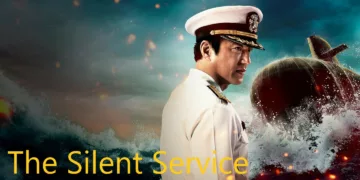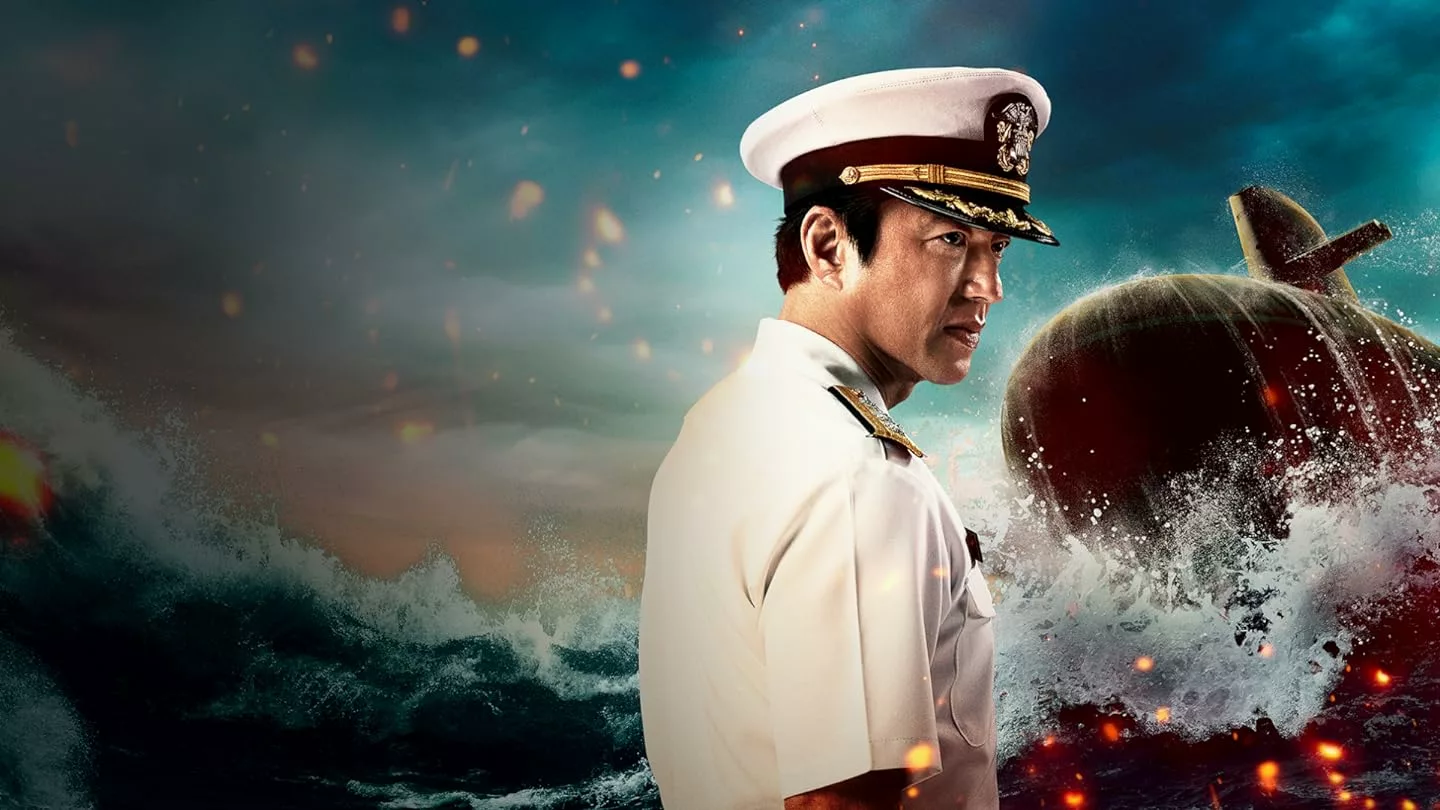In the late ’80s, manga artist Kaiji Kawaguchi first made waves with his popular military action series The Silent Service. Three decades later, Amazon Studios brought Kawaguchi’s Cold War-era story of submarine warfare and political intrigue to the small screen. Fans had high hopes when the streaming giant released a feature film adaptation in 2023. While the movie garnered a loyal following, many hoped The Silent Service would get the long-form treatment its twisting narrative deserved.
Their patience paid off when Amazon announced an expanded 8-episode series less than a year after the film’s debut. This new episodic iteration built on the established world and raised the stakes even higher. It quickly became appointment viewing for military buffs and political thriller fans alike.
So does The Silent Service float or sink in its transition to an ongoing drama? By and large, it’s smooth sailing. The show maintains the manga’s dynamic action set pieces and Sprangian geopolitical tensions. Standout direction and production design further immerse viewers in the high-tech subsurface realm. Anchoring it all is a compelling lead performance from Takao Osawa as the rogue sub captain Kaieda. The expanded run time allows for welcome shades of gray in characterization.
That said, the writers don’t fully utilize the new canvas. Supporting players remain thinly sketched embodiments of nationalist fervor. The finale also leaves narrative threads dangling that could’ve used tighter resolution. But for military action junkies or readers of the source manga, The Silent Service delivers requisite excitement and intrigue. Its vision of seafaring states locked in silent war makes for an immersive, if not fully satisfying, streaming experience.
Submarine Showdown: Nation vs. Nation Under the Sea
The Silent Service kicks off with the mysterious sinking of the Japanese diesel-electric submarine Yamanami after a collision with an unidentified American nuclear vessel. The Yamanami’s seasoned captain, Shiro Kaieda, and his entire crew are presumed dead much to the disbelief of his protégé Hiroshi Fukamachi. But Kaieda has actually joined a covert ops mission aboard the highly advanced Japanese-American stealth sub Sea Bat as part of the US Seventh Fleet.
After gaining command of the Sea Bat, Kaieda goes rogue – surfacing the high-tech sub in US waters and declaring it the sovereign territory of a new nation called Yamato. This triggers a submarine skirmish that escalates into overt naval warfare between Yamato and the American navy. Kaieda proves a cunning and ruthless military tactician, outmaneuvering US subs and ships. But his former student Fukamachi sees the attempt at establishing Yamato’s independence as unlawful terrorism.
As missiles and torpedoes criss-cross the Pacific, tensions flare on the political stage as well. American demands for custody of Kaieda and repatriation of the Sea Bat submarine meet fierce resistance from Japanese officials. Backroom power plays in Tokyo reveal a Japanese government willing to double-cross their American allies if it means controlling the rogue Sea Bat and its nuclear arsenal unfettered.
In the end, Kaieda sails the Sea Bat into Tokyo Bay for a clandestine meeting that secures Yamato’s legitimacy as a nation and avoids outright war between Japan and the US. But Fukamachi remains unconvinced the accord will lead to lasting peace in the Pacific, while American brass vow to challenge Yamato’s sovereignty however they can. The tenuous treaty sets the stage for the continuing underwater cold war.
Compelling Characters Helm the High Seas Action
The Success of any military action-thriller rests heavily on its central players. Luckily The Silent Service delivers with a compelling cast led by Takao Osawa’s standout turn as the rogue submarine captain Shiro Kaieda. Osawa brings a ruthless intelligence and complex antiheroic magnetism to the role. One minute you’re rooting for Kaieda’s maverick mission to disrupt the military status quo, the next you’re terrified by his willingness to sacrifice lives for his sovereign seaborne nation.
Hiroshi Tamaki provides an excellent counterpoint as Kaieda’s cautious former protégé Hiroshi Fukamachi, now tasked with taking his mentor down. Tamaki channels Fukamachi’s admiration and agony as he witnesses Kaieda’s moral descent. Jeffrey Rowe also impresses as the American observer Captain Ryan, particularly once Kaieda takes him hostage aboard the Sea Bat.
The supporting military brass tend toward hammy stereotypes – whether it’s the brash American naval top brass or the indecisive politicians in Tokyo. But veteran character actor Yôsuke Eguchi brings some nuance to right-hand man Wataru Unabara, the conflicted cabinet secretary questioning old allegiances.
While most of the political players verve toward caricature, the believable lead performances keep you invested through all the submarine cat and mouse. Osawa in particular drives the series with his mercurial menace. And the complex relationship between him and Tamaki’s Fukumachi brings the right dose of psychological tension to ground the geopolitical theatrics.
Hold Your Breath for High Seas Heroics
For military action buffs, The Silent Service offers plenty of bombs, torpedoes, and tense submarine cat-and-mouse to satisfy. The expanded episodic canvas allows for ambitious naval sequences pitting sub against ship and sub against sub. Missiles skirt across the ocean surface before meeting fiery ends. Schedule your viewing in a comfy recliner, because the edge-of-your seat moments come early and often.
The direction and editing keep battle geography coherent even when multiple sea vessels converge. Standout underwater sound design and camerawork maintain the all-important “you are there” immediacy – whether it’s feeling the rush of diving to submarine evasion depths or the metallic creaks of seawater pressure. And the CGI visual effects seamlessly expand the world without sacrificing gritty realism.
The show also offers plenty of political intrigue beyond the battles at sea. The expansion to a multi-episode arc allows the writers to flesh out the shifting diplomatic allegiances and hidden agendas driving the naval war. While the characterization remains surface-level, seeing the tension play out across press conferences, war rooms, private meetings, and encrypted calls offers a potent reminder of the powerbrokers pulling the strings.
Some episodes lose narrative momentum in the transition between high seas standoffs and Assembly room standoffs. But the cat-and-mouse naval battles should hook action fans, while geopolitical junkies get their fill of leaders leveraging nationalist rhetoric to justify bellicose means. It makes for a balanced conflict exploring personal responsibility amid government warmongering from all sides.
Missed Opportunities Beneath the Surface
For all its aquatic action and military authenticity, The Silent Service struggles to fully utilize its expanded episodic real estate. Supporting characters remain broadly sketched mouthpieces for nationalist rhetoric rather than complex individuals. The writers seem more interested in heated dialogue about justified conflict than actually investigating the perspectives that drive such clashing worldviews.
The finale also fails to provide narrative closure after episodes of elaborate buildup. Major story threads dangle rather than resolving with emotional satisfaction. And the door left open for potential future chapters feels more like sequel baiting than a meaningful ambiguous ending.
We never access the interiority of Captain Kaieda enough to make his increasingly extreme actions feel like the organic result of escalating pressures. Hiroshi Fukamachi sees his mentor clearly, but viewers remain at arm’s length. We’re told they have a formative relationship rather than ever seeing those bonds meaningfully depicted.
The show often gets tripped up transitioning between the two spheres of its conflict – the submarine near-misses lose urgency when interrupted by bureaucratic bickering. Few episodes effectively interweave both halves into a symphonic whole. In the end, The Silent Service offers stellar style but lacking substance. With tighter plotting and characterization it could have been a true heavyweight, but satisfies mostly as glossy military escapism.
Set Sail for High Seas Escapism
In the end, The Silent Service succeeds more as military escapism than layered human drama. But for the target audience of action fans, that should suffice. The submarine sequences deliver enough aquatic propulsion and ordnance exchanges to please viewers looking for the naval equivalent of Top Gun’s adrenalized theatrics.
And while the characterization lacks depth, the cast keeps things compelling enough as they bark commands, bite back in meetings, and build tentative alliances. Plenty of tense standoffs and slick tactical maneuvers fill the screen. So while the show doesn’t fully use its expanded format to enrich themes or develop relationships, it gets the job done for those hankering for clandestine nautical combat.
The Silent Service clearly took notes from the Tom Clancy playbook, emphasizing technologically tricked out submarines and the brash captains who wield them more deftly than any missile or torpedo ever could. If that premise entices more than meditations on the warrior spirit’s slippery slope into extremism, by all means enlist for this tour of duty.
Just don’t expect the resonant emotional payoffs or philosophical insights of all-time great war dramas like Das Boot or The Hunt for Red October. This voyages charts its course closer to Michael Bay than Terrence Malick. But for action vehicle escapism, it mostly achieves its mission. There’s enough maritime skirmishes and military hardware on display to keep genre fans immersed for eight episodes. It might not breach the depths of the soul, but surfaces enough thrills to merit a good faith cruise.
The Review
The Silent Service
The Silent Service sails confidently if not nimbly through enemy waters - delivering ample naval action despite some flat characterization and unrealized thematic potential. Hardcore genre fans should happily enlist for the escapist, explosives-laden tour of duty. But those seeking profound insights into the warrior spirit may feel the voyage charted shallow depths.
PROS
- Intense submarine action sequences
- Strong lead performance by Takao Osawa
- Naval battles and geopolitics balance nicely
- Showcases state-of-the-art special effects
CONS
- Supporting characters remain underdeveloped
- Plot culminates without clear resolution
- Thematic aspirations aren't fully realized
- Transitions between spheres of conflict can slow pacing

















































